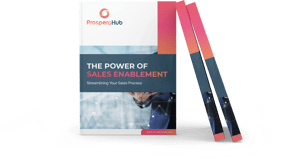Traditionally, the critical role of marketers in the B2B lead generation process was focused on finding opportunities to pass to the sales team, with limited integration with sales to define and enhance the volume or quality of the leads that progress to customers or closed revenue.
But as the number of competitors, Go-To-Market channels, and buying behaviours continue to change around them, marketers have become increasingly data driven and integrated with the sales function when planning and implementing marketing campaigns; thus gaining more control to influence organisational performance and success.
A lack of alignment
The problem with the traditional role of the marketer in the lead generation process is the lack of alignment of goals between the marketing and sales functions. It may be the case that marketing are driving a high volume of leads and hitting their targets month on month, but their goals are weighted too much on quantity. Thus the sales team become frustrated at the quality of leads which are passed on and marketing are similarly frustrated that sales do not follow up on all their leads.
Marketing can be regarded as a high cost function, and their impact on revenue generated in the business underestimated. It's no wonder that HubSpot reported that organisations' 2nd biggest challenge in marketing is proving the ROI of marketing activities and that converting contacts/ leads to customers is their key priority for the next 12 months.
Empowering marketers
Today, successful campaigns are driven by a deep seated understanding that engaging successfully with your target audience requires well defined buyer personas and the creation of premium content to drive engagement with these personas. An evolution in marketing strategy that has been marked by the growth of digital marketing practice and the inbound methodology.
With an awareness of not just the number of leads that must be generated, but also the overall revenue goals, marketers must become more focused on harnessing all of the available channels when crafting campaigns to impact the entire funnel – from the early stage top of the funnel leads, to the sales qualified leads towards the bottom of the funnel.
Empowered to attract, convert and delight at all stages of the buyer’s journey, marketers are now delivering successful pipeline marketing campaigns and have a more critical and engrained role to play in the B2B lead generation process.
Pipeline marketing
Pipeline marketing involves aligning sales and marketing goals, to ensure marketers can establish their critical role in generating revenue - not just leads. It involves all marketing campaigns and channels, focusing on the goal conversion rate at each stage of the funnel.
Breaking down the silos between sales and marketing has enabled greater collaboration on progressive lead targeting and nurturing campaigns, shared decision making and marketing goals based on revenue.
Using direct marketing and digital marketing tactics such as social media, blogging, email marketing, and content creation, marketing play a critical role in attracting, converting and closing customers. Thus maximising pipeline development; that being a collective pipeline, not just a sales pipeline.
4 key components
By creating campaigns which incorporate the full spectrum of B2B lead generation tactics and cater to all stages of the buyer’s journey, prospects can be nurtured throughout the entirety of the pipeline. This involves 4 key components:
1) Establishing Staging Criteria
In order to put in place a marketing strategy that will progress your prospects through the pipeline, a defined understanding of the individual stages of a lead and the criteria of each stage is required.
2) SMarketing
Establishing a firm understanding of the qualification criteria of each stage requires a strong SMarketing relationship. With increased communication and shared analytics; emphasis can be placed on lead generation tactics that produce results, both in terms of the volume of leads generated and the revenue generated.
3) Lead Generation
An integrated approach of direct marketing and digital marketing allows for early stage leads to be attracted and nurtured through inbound marketing, whilst direct marketing allows you to target your key target accounts and convert those leads into customers. This places the focus on both short term and long term goals, both of which marketing and sales should have a clear understanding of.
4) Lead Nurturing
Lead nurturing is the process of building a relationship with your prospects, placing your content in the forefront of their mind for when they are ready to take the final step and enter the decision stage of the buyer's journey. Content creation is key here, as a tool for both teams to guide prospects through their buying process. Many leads are wasted due to a lack of aligned process for lead nurturing, a space that is in between the realms of the marketing and sales functions. Defining this process will ensure no leads drop off the radar and it will allow you over time to better understand which characteristics define your ideal customer.
 Make sure you harness the power of sales enablement by downloading our eBook and get our complete insight into streamlining your sales processes for more effective sales at a higher volume.
Make sure you harness the power of sales enablement by downloading our eBook and get our complete insight into streamlining your sales processes for more effective sales at a higher volume.



.png?width=1940&height=1024&name=Part%20of%20Siloy%20logos%20(2).png)



.png?width=125&height=125&name=DataMigration534x534%20(1).png)
-1.png?width=125&height=125&name=Untitled%20design%20(4)-1.png)
